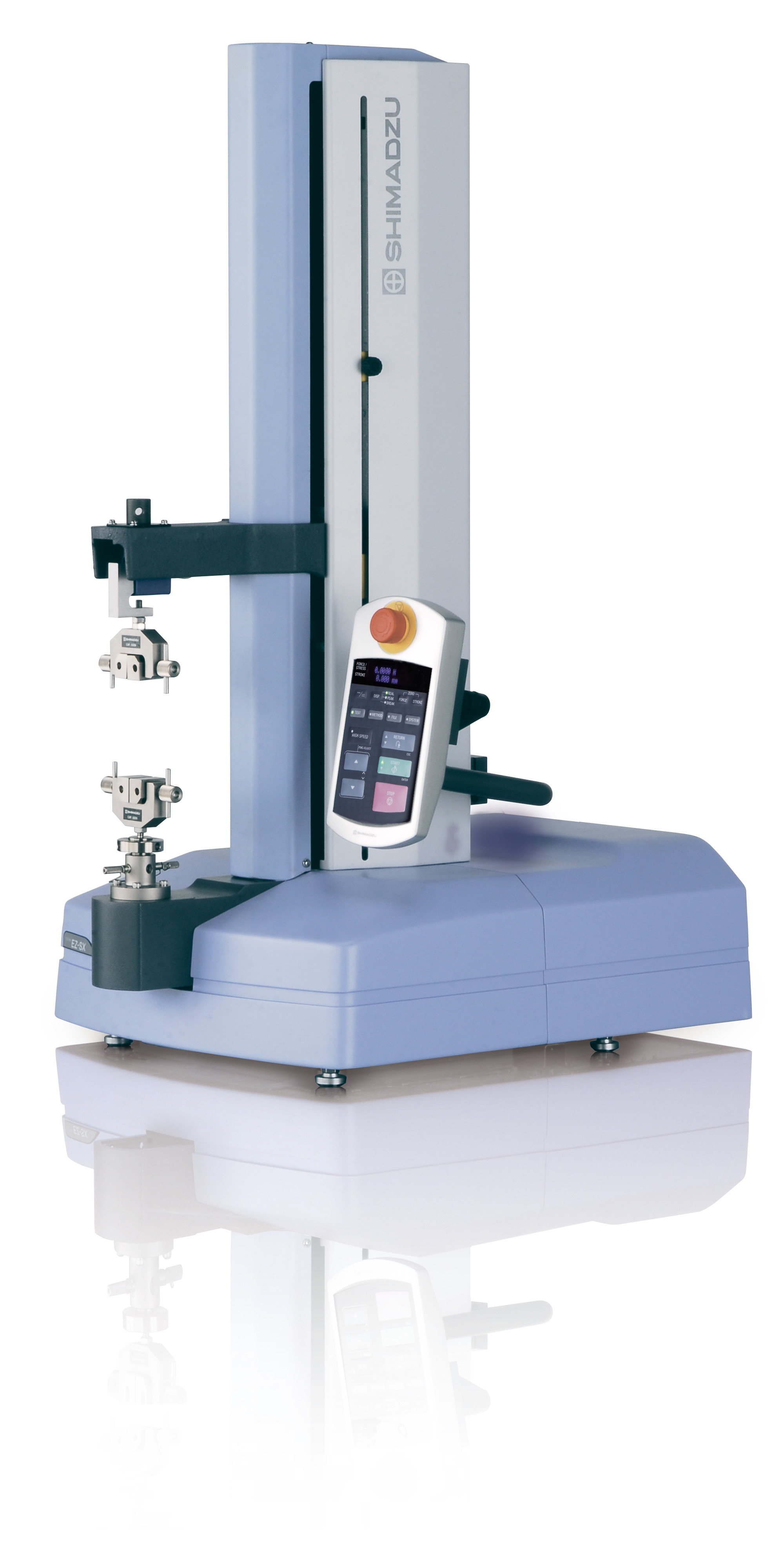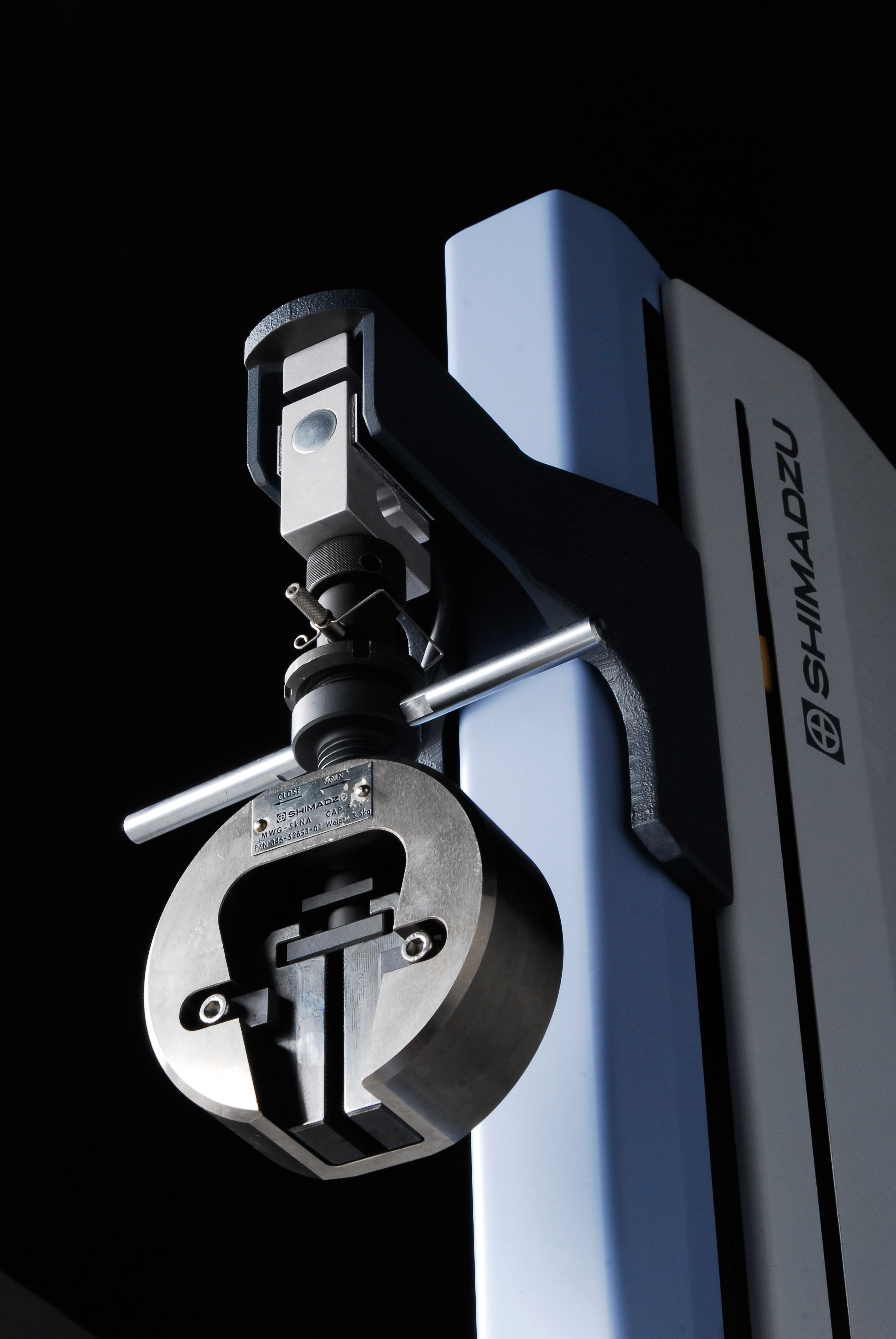Nibble, nibble, little mouse ...
New texture analyzer EZ-Test-X available

Who can resist the temptation to bite into a tasty piece of ginger bread? Surely not many, except those who worry about calories and dental health. Because in general, the crunchier a product, the harder it is too.
To protect consumers, modern food technology laboratories increasingly use texture analyzers. These are indispensable not only in quality control and in verification of exemption from liability, but are also useful in the development of new products. To be able to meet all current requirements, particularly flexible instruments and modern controls are required.
 Figure 1: EZ-Test SX with compact screw-type grips
Figure 1: EZ-Test SX with compact screw-type grips
This is where the newly developed EZ-Test-X texture analyzer comes in. Thanks to the new controller, all load cells are now optionally available in class 1 or even 0.5 accuracy according to ISO 7500 and EN 10002-2. Each load cell covers a vast measuring range from 1/1 up to 1/500 of the nominal capacity selected, in a continuous manner. In this way, measurements of up to 5,000 N but particularly in the most critical lower range of only two millinewtons, can be carried out with excellent precision.
Test speed and positioning accuracy have also been further optimized to attain test speeds of up to 2,000 mm/min with an accuracy of 0.1 %. A high-performance controller that can send up to 1,000 data per second to the PC guarantees this performance.
Not only for the food industry
 Figure 2: Modern non-shift wedge type grips in combination with a high-precision load cell
Figure 2: Modern non-shift wedge type grips in combination with a high-precision load cell
The EZ-Test-X is not only suitable for the food industry but can also be used wherever very small forces or compact samples must be reliably and reproducibly tested. Typical application areas include, for instance, the measurement of filaments, adhesive tests, shear tests of sensitive electronic components or friction tests of plastic films. The comprehensive Trapezium-X software supports all common standards and regulations, allowing independent optimizing and parameterizing of the tests.
Classic standard methods to determine the characteristics of plastics, metals, ceramics and other materials or products can also be carried out in this way.
To do so, it is possible to connect additional highly sensitive measuring sensors such as clip-on extensometers as well as the new TRViewX video extensometer with the unique accuracy class 0.5 according to EN 9513.
A wide range of accessories ensures a secure hold as well as an exact positioning of the test specimen. The broad arm of the crosshead enables measurement of large-size samples such as circuit boards, but entire loaves or even ginger bread can be tested.
Looking forward to Christmas …